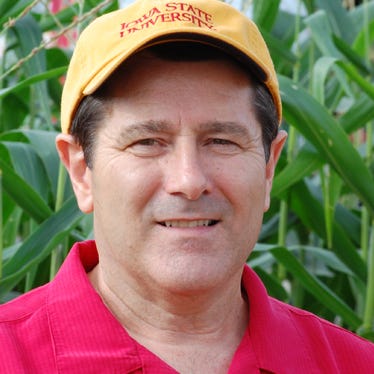May 26, 2017

The frequent rains that have soaked parts of the Corn Belt this spring have left many corn and soybean fields unplanted or with flooded areas that will need to be replanted. These farmers are wondering what options they have under their multiple peril crop insurance policies. The first step is notifying your crop insurance agent as soon as possible to make sure you understand the crop insurance provisions.
In Iowa, the crop insurance "late planting period" for corn begins June 1 and varies across the Corn Belt. You can still plant corn after this date, but the insurance guarantee on those acres is reduced by 1% per day until planted. Corn acres planted after June 25 will receive insurance coverage equal to 60% of their original guarantee.
Producers should keep accurate records of planting dates on all remaining acres for both crop insurance and USDA Farm Service Agency purposes. The late planting period for soybeans in Iowa is June 16 through July 10.
Unplanted corn acres as of June 1
Beginning June 1, producers with unplanted corn acres have three choices:
• Plant corn as soon as possible with a reduced guarantee.
• Shift to soybeans with full insurance coverage.
• Apply for prevented planting. Prevented planting acres are insured at 55% of their original guarantee for corn and 60% for soybeans. A cover crop can be established on those acres or the land left idle (black dirt).
Acres that have been planted, but need to be replanted, may qualify for a special replanting insurance payment. Payments are based on the value of 8 bushels of corn or 3 bushels of soybeans per acre, times their respective projected insurance prices determined in February. For 2017, that is about $32 per acre for corn and $31 per acre for soybeans. To qualify for an indemnity payment under the replanted or prevented planting provisions, a minimum area of 20 acres or 20% of the insured unit must have suffered loss, whichever is smaller.
ISU Extension resources on crop insurance
More details can be found in the publication Delayed and Prevented Planting Provisions, File A1-57 on the Iowa State University Extension Ag Decision Maker website. An electronic decision spreadsheet is also available to help analyze alternative actions. Producers should communicate with their crop insurance agent before making decisions about replanting or abandoning acres.
Establishing a cover crop is not required on prevented planting acres, but is highly recommended. The rules set by USDA's Risk Management Agency, which oversees the federal crop insurance program, do not require a cover crop. However, RMA encourages cover crops and you will receive a full-prevented planting payment — even if you choose not to plant a cover crop. The cover crop choices likely include oats, wheat, barley or millet.
Keep in mind if you plant any kind of cover crop, you cannot harvest or graze those acres until after Nov. 1; then you can graze it off.
What if you leave unplanted or idle acreage?
Another option is to leave the unplanted or abandoned acreage idle (black dirt), but this is probably not the best agronomic choice. However, for some small areas of fields it might be the only choice. There may be some portions of fields in the river bottoms or low-lying areas where equipment cannot gain access because of flooded or continued wet conditions.
Most all Iowa fields will be planted this spring. Some acres will require replanting. For crop insurance purposes, these fields will be in the delayed planting or a replant situation. Regardless, producers should keep good records of planting dates and acres for both crop insurance and FSA acreage certification. Write down the dates you planted, the crop, number of acres and reference the farm name or number.
Johnson is an Iowa State University Extension and Outreach farm management specialist. He can be reached at [email protected].
About the Author(s)
You May Also Like






